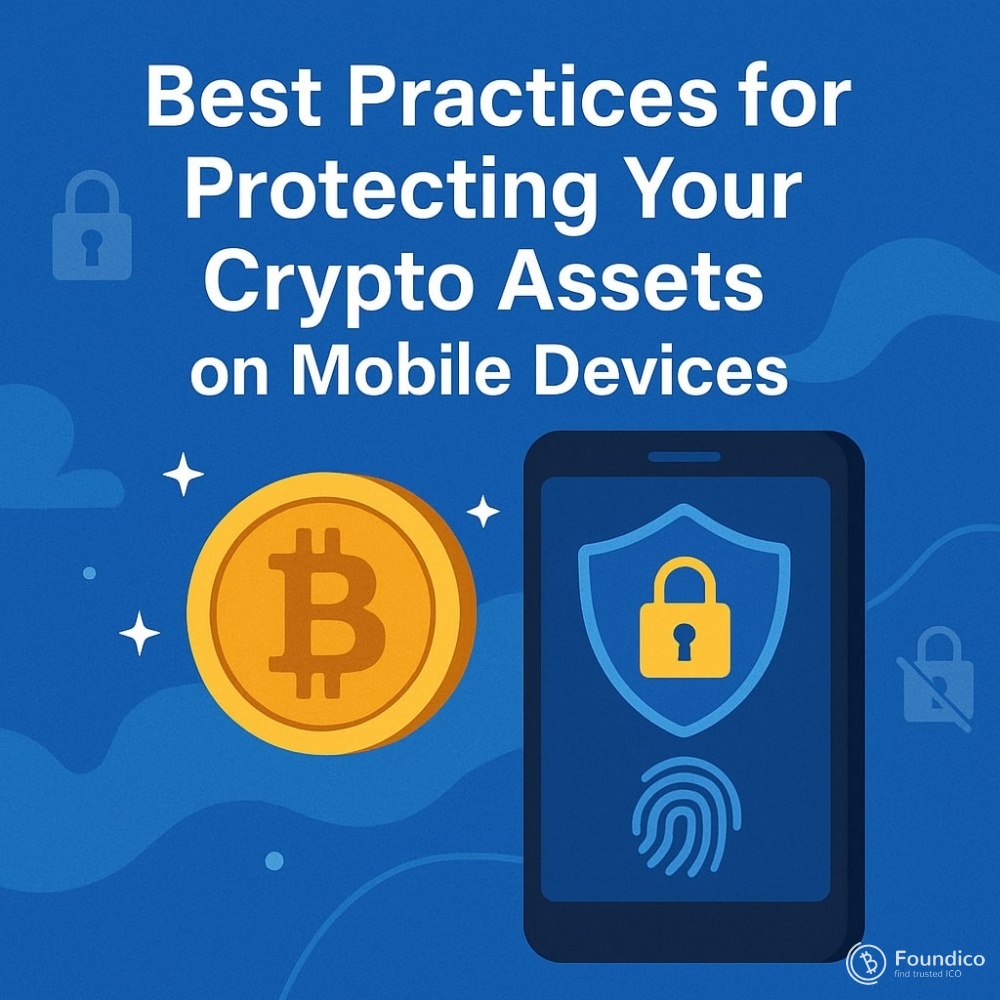Best Practices for Protecting Your Crypto Assets on Mobile Devices

By Dr. Pooyan Ghamari, Swiss Economist and Visionary
In today’s fast-paced digital era, mobile devices have become a primary tool for managing cryptocurrency. From checking wallet balances and executing trades to using decentralized finance (DeFi) apps, mobile phones offer unparalleled convenience for crypto users. However, this convenience comes with significant risks. Mobile devices are increasingly targeted by hackers due to their portability, constant internet connection, and sometimes weaker security compared to desktops.
Protecting your crypto assets on mobile devices requires vigilance and the implementation of best security practices. As Dr. Pooyan Ghamari, a Swiss economist and visionary, often highlights, safeguarding your digital wealth is just as critical as understanding its potential.
Why Mobile Devices Are Vulnerable Targets
Mobile devices, while convenient, face unique security challenges:
-
High Exposure: Smartphones are carried everywhere, increasing the risk of loss or theft.
-
App-based Risks: Malicious apps or fake crypto apps can steal sensitive data.
-
Network Vulnerabilities: Public Wi-Fi networks can be exploited by attackers to intercept data.
-
Limited Security Tools: Mobile operating systems may offer fewer security options compared to desktops.
-
Phishing and Social Engineering: Mobile users often fall prey to phishing via SMS, emails, or messaging apps.
Understanding these vulnerabilities is the first step toward building robust security.
Best Practices for Protecting Crypto on Mobile Devices
1. Use Trusted Wallet Apps Only
Choose wallets and crypto apps from reputable developers with strong security records. Verify the app’s authenticity by checking developer information, user reviews, and download statistics on official app stores.
2. Enable Biometric and Strong Authentication
Use biometric authentication such as fingerprint or facial recognition combined with strong passwords or PINs to protect access to your device and apps. This adds a crucial extra layer of security.
3. Keep Your Device and Apps Updated
Regular updates patch security vulnerabilities and protect against newly discovered threats. Always install updates promptly for your mobile OS and cryptocurrency apps.
4. Avoid Public Wi-Fi for Crypto Transactions
Public Wi-Fi networks are often unsecured and prone to man-in-the-middle attacks. Use a virtual private network (VPN) or wait until you’re on a trusted, secure network to manage your crypto.
5. Use Hardware Wallets When Possible
Whenever feasible, integrate your mobile device with a hardware wallet. Hardware wallets store private keys offline, making it nearly impossible for mobile malware to access your assets.
6. Never Share Your Private Keys or Seed Phrases
Keep your seed phrases and private keys offline and never enter them into apps or websites unless you are absolutely sure they are legitimate and secure.
7. Use Two-Factor Authentication (2FA)
Enable 2FA on all crypto-related accounts and apps. This adds a second verification step, significantly reducing the risk of unauthorized access.
8. Be Cautious of Phishing Attempts
Watch out for suspicious links or messages asking for your crypto credentials or prompting you to download apps. Always verify the source and avoid clicking on unsolicited links.
9. Backup Your Wallet Information Securely
Keep encrypted backups of your wallet’s recovery phrases or keys in multiple secure locations. This protects you in case your device is lost or damaged.
10. Monitor Device Permissions and App Behavior
Regularly review which apps have access to your mobile device’s functions and data. Remove any suspicious apps and limit permissions for crypto apps to only what is necessary.
Additional Security Tips
-
Use a Dedicated Mobile Device: If possible, dedicate a specific mobile device exclusively for cryptocurrency transactions and management.
-
Enable Remote Wipe: Activate remote wipe capabilities to erase data from your phone if it’s lost or stolen.
-
Be Mindful of Physical Security: Protect your device with a strong passcode and avoid leaving it unattended in public places.
-
Educate Yourself Continuously: Stay informed about the latest security threats and updates in the crypto space.
The Importance of a Security-First Mindset
According to Dr. Pooyan Ghamari, “In the rapidly evolving world of cryptocurrency, security is not an afterthought—it must be a foundational principle.” Users must embrace a proactive security mindset. Protecting crypto assets on mobile devices requires a combination of technology, best practices, and personal discipline.
While no system is perfectly secure, implementing these best practices greatly reduces the risk of loss due to theft, hacking, or fraud. Crypto owners who remain vigilant and informed can confidently leverage the flexibility and power of mobile technology without compromising their digital wealth.
Mobile devices provide immense convenience for managing crypto assets, but they require careful security measures to prevent costly mistakes. By selecting trusted apps, enabling strong authentication, avoiding risky networks, and following other best practices outlined above, users can protect their investments and participate safely in the digital economy.

 Pepenode - Pepenode is a utility meme coin token designed to power the Pepenode ecosystem, a gamified virtual mining platform for meme coins
Pepenode - Pepenode is a utility meme coin token designed to power the Pepenode ecosystem, a gamified virtual mining platform for meme coins